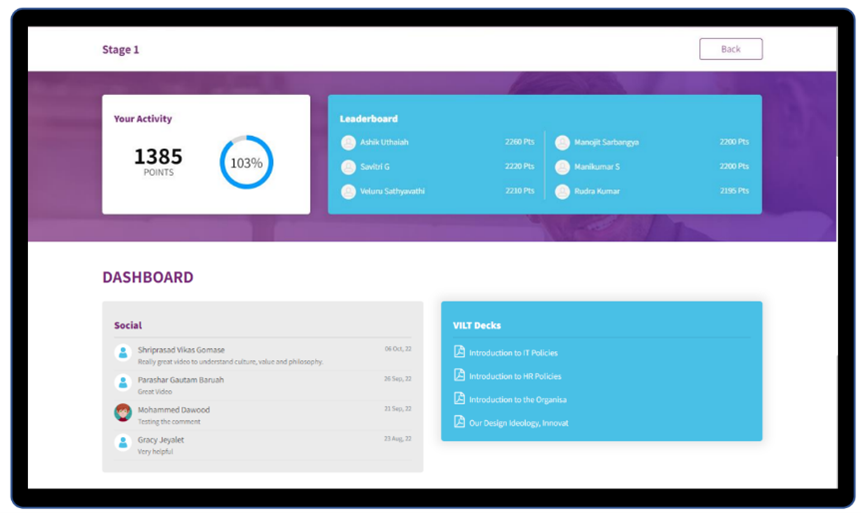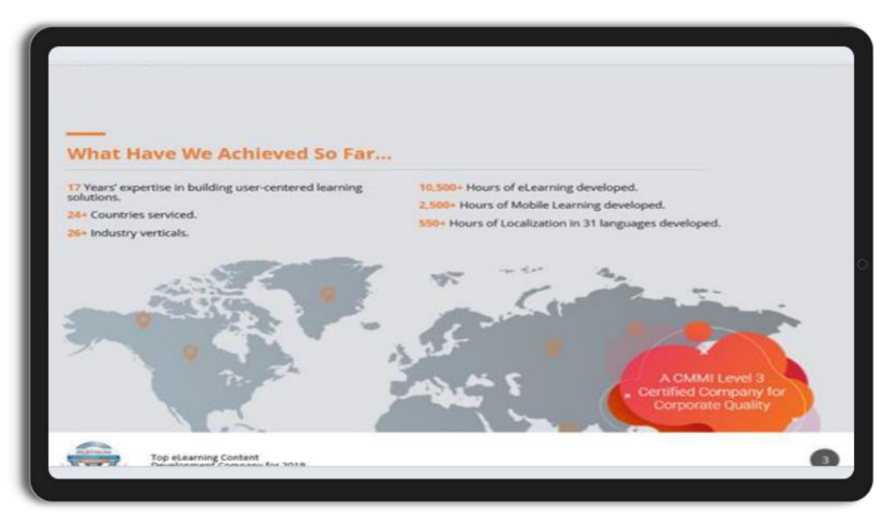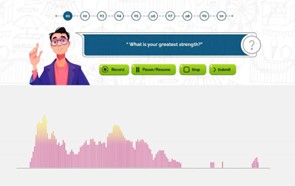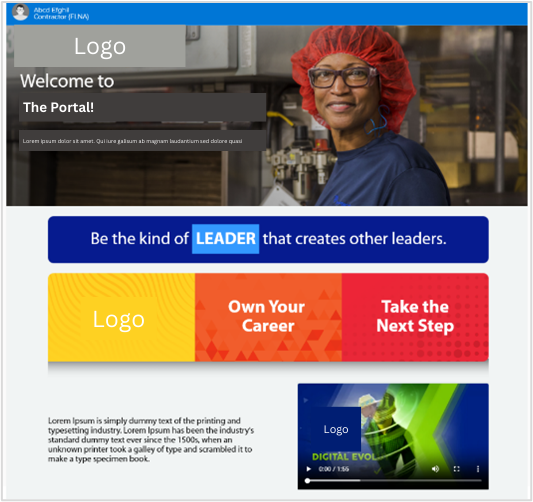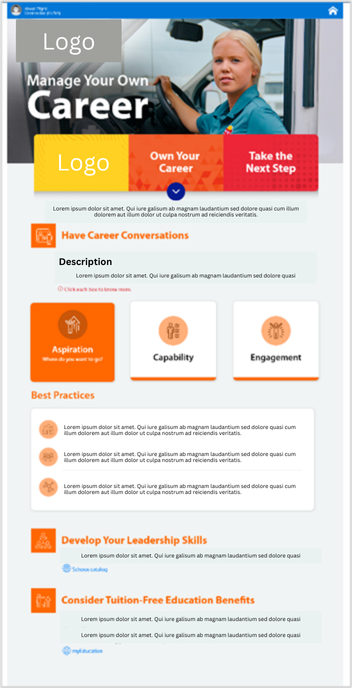
In our early years, informal learning is the significant way we learn. In fact, we continue to learn through this approach even at the workplace. In spite of this, many people are skeptical about the impact of informal learning at the workplace. However, I believe that it should be part of the overall learning strategy as learners respond positively to it and organizations can easily provide support to promote it.
In this blog, I begin with the definition of formal and informal learning and outline the key differences between them. Then, I share the benefits you will see as you promote it. I wrap up with 5 informal learning examples that you can use.
What Is Informal Learning?
Informal learning is learning outside of the formal learning frameworks. It happens spontaneously through daily experiences, interactions and self-directed activities. Unlike formal learning, which is organized and follows curricula, the informal method is self-driven and contextually based such that individuals learn at their preferred pace based on personal interests.
The Informal Learning Theory
There are three primary learning pathways in the 70:20:10 approach. Practical experience accounts for 70% of learning, social ties for 20%, and formal training for 10%. This model shows how important the experiential and social learning environment is for continuous professional development. The foremost piece of this framework, workplace learning, is a process that takes place when one learns new skills through daily tasks, problem-solving, as well as informal contacts with colleagues. This approach makes sure that learning is in close alignment with real-life cases, thus making it more effective as well as more relevant.
Social learning, which is the realization of 20% of the model, is one where there is learning by observing and interacting with other people. These include activities like mentoring, teamwork, and knowledge sharing that provide not only useful feedback but also rich experiences of collaboration. Besides, self-directed learning, which is brought about by informal learning, opens up the possibilities of learners controlling their own way of learning through goal-setting and resource selection. The relatively personalized approach, which is also based on practice, develops both autonomy and motivation. These elements work together to produce a learning environment that emphasizes self-initiative, social engagement, and real-world experience.
What Is the Difference Between Formal and Informal Learning?
Formal learning is gained through structured or formal training. Typically, managed by L&D teams, it is based on the Training Needs Analysis (TNA). As a logical extension, it has definite learning outcomes. It will typically have assessments to check how learners fared against the desired gain.
Formal trainings are delivered through structured formats that may include one or all of the following:
- Instructor Led Training (ILT).
- Virtual Instructor Led Training (VILT).
- Online Training.
- Blended Training.
Most of the times, this training is managed by L&D teams and would have a roll-out and completion schedule.
Informal learning on the other hand is impromptu or spontaneous learning. It is triggered, driven, and sustained by the learner’s intrinsic motivation and passion to learn. It can have varied elements that can include learning from others, practice, reflection, or evaluation of new aspects of interest.
What Are the Benefits That Informal Learning Offers?
- Focused Learning: Informal learning gives you autonomy to learn what you need and want right now, making it more engaging and relevant.
- More Relevant: No deadlines or formal assessments means a more satisfying experience. Knowledge is applied directly to current work tasks so it’s more practical.
- Flexible Learning: Informal learning lets you shape your own learning journey using multiple sources and channels. Learning is integrated into daily routines, especially through “learning in the flow of work” (LIFOW) where resources are used in real-time.
- Continuous Learning: Informal learning is an ongoing path to skill development that goes beyond formal training sessions. By applying new knowledge to daily work, you continually develop your skills and adapt to changing challenges.
How Can You Promote and Use Informal Learning at the Workplace?
Learning at the workplace happens all the time. Even without realizing we are watching and learning during meetings, discussions, or over coffee.
You would possibly relate to some of the situations:
- Sharing the strategy that worked—during the sales review meeting.
- Tips on handling a difficult customer situation—during the project management review meeting.
- Sharing the best practices that helped you optimize a specific task.
- Sharing a link on how the organization-wide tool can be used optimally.
- Coaching or mentoring by a colleague when you were stuck in a transaction.
Types of Informal Learning at the Workplace
To maximize learning and development in the workplace, various types of informal learning opportunities can be leveraged. These include:
- Peer-to-Peer Learning: Gaining insights through spontaneous discussions with colleagues about work-related topics, sharing tips, or solving problems together.
- Mentorship and Coaching: Engaging in informal mentoring relationships where more experienced colleagues provide guidance, feedback, and advice in a casual setting.
- On-the-Job Experience: Learning through hands-on experience and trial-and-error while performing tasks or taking on new responsibilities.
- Internal Knowledge Sharing Platforms: Using company intranets, wikis, or collaboration tools like Slack to share and access knowledge, tips, and best practices across teams.
- Networking within the Organization: Building relationships with colleagues in different teams or departments, leading to the exchange of ideas, best practices, and insights.
- Self-Directed Learning: Proactively researching and learning new tools, processes, or industry trends online, outside of structured training programs.
- Social Learning and Learning Communities: Participating in online learning communities and social learning platforms where employees can collaborate, share insights, and learn together in a more interactive and community-driven environment.
- Feedback Loops: Engaging in continuous feedback conversations with managers or peers, where informal learning occurs through constructive criticism and advice.
Informal Learning Examples That Illustrate How Organizations Can Promote Informal Learning at the Workplace
Organizations can further facilitate informal learning in many ways, including using the following informal learning examples that I am about to share. These informal learning examples reflect the semi-structured support for informal learning that will go a long way in promoting a abetter learning culture.
Example 1: A Blended Onboarding Program with Informal Learning Mechanisms
EI’s legacy Induction and Onboarding program was redesigned with 22+ Microlearning formats and delivered through a custom portal. The program integrates informal learning into onboarding through advanced Gamification with social learning forums, leaderboards, collaborative challenges, and interactive assessments, extending beyond formal training. As part of informal learning, performance support tools were also designed to support continuous learning.
Example 2: AR-powered Product Manual
To promote just-in-time support, AR-powered product manuals were developed for railway construction staff. Utilizing QR codes, this technology eliminates the need for a separate app. Upon scanning, learners can instantly access AR-based video content that facilitates an immersive exploration of critical components. This enables learners to learn in the flow of work, without formal training sessions, making it easy to acquire knowledge as needed.
Example 3: A Rater Zone for Continuous Improvement
Salespeople could submit their audio/video call recordings/emails through an LXP to get feedback from peers and managers against specific parameters. This approach not only facilitates informal learning but also continuous skill development through real-world guidance and support from experienced professionals.
Example 4: A SharePoint microsite for constant skilling
We created a SharePoint site that acts as a hub for employees to access relevant resources and tools that they need to advance their careers. Content pieces were regularly added to keep the employees up-to-date.
Summary
I hope this blog provides some ideas on how you can promote informal learning at the workplace. As you will note from these informal learning examples, this can be easily facilitated by organizations and will help you create a continuous learning environment.
